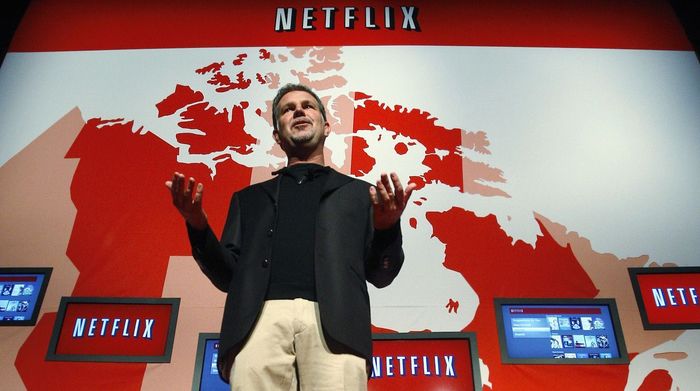The Natural History Museum’s new director makes the museum sector’s issues plain
Douglas Gurr, formerly of Amazon, is to head up the South Kensington institution – that shows just what’s wrong in the state of heritage, says Esmee Wright

The National History Museum has hired a new director, much to the dismay of a number of people involved in the museum industry. Once more it seems, a well-off white man has swanned in and nabbed an important job from under the noses of a thousand-and-one dedicated workers in the industry. This time it is Douglas Gurr, who comes from the most reputable of backgrounds…
Amazon?
"Gurr is basically a figurehead. But that is part of the problem"
It’s such a common occurrence that some may wonder if it’s even worth getting in a tizzy this time. After all, it’s not like he’s going to be doing anything beyond providing the occasional opening quote and schmoozing at donors’ events. He’s basically a figurehead. But that is part of the problem.
There are two reasons why I, and many people far more influential in the museum industry, are displeased and disappointed by this appointment. The first is the seemingly simple fact that, unlike Doug Gurr, there are many museum professionals who entered this industry, have dedicated themselves to it, and continue to receive very little official pay off. Some fear that Gurr may be planning on implementing Amazon work (mal)practices in the museum sector.
That is to ignore the already dubious state of employment in the industry. There is an unfortunate tendency to view working in culture as a “calling” – a fun little word which justifies low pay and long hours with the reward of a little public gratitude. Tour guides, the entry point for many into the vast collections of British museums around the country, are often low paid, if not volunteers. The advancement possibilities beyond that are opaque.
If you have spent too much time in galleries, you might have heard of curators, but how does that role differ from the job of archivists? Or exhibition designers? How about content producers? And how likely are you to apply to these jobs if you know that at any time a man from Amazon who has never worked in your sector could suddenly become your superior?
The second reason is equally important, and insidious. As the face on the first page of every brochure, Gurr’s image will be synonymous with the Natural History Museum in a way that can’t be counteracted even by plenty of publicity photos of your friendly, diverse team on the ground. Why should it be counteracted? The question is should be unnecessary. And yet by continually appointing people like Douglas Gurr to these positions, the establishment is making it clear that they don’t yet understand the answer, though they well should.
There is an assumption in British culture that museums are inherently positive learning spaces. An assumption that we all go there simply to look and learn, and that groups who don’t go to the museum need to be encouraged to go for their own good. It becomes the job of the modern outreach programme to show these people, with bright colours and interactive displays, that learning isn’t bad, or scary, or not for the likes of them.
Very rarely do people discuss how museums might have failed these people. Far too rarely is it asked; why don’t these people come to museums in the first place? Why weren’t these people the first through the doors when these places opened over 100 years ago?
"As Professor Dan Hicks states “In this country you’re never more than 150 miles away from a looted African object”"
In 2018 to 2019, 51.2% of white people had visited a museum or gallery. 43.7% of Asian people. Only 33.5% of Black people. Why such a disparity? After the ceremonial dunking of Edward Colston, public consciousness is just beginning to reckon with the colonialist history of many of our public institutions, where philanthropists turned their bloody money into public capital and put their stolen booty on display.
As Professor Dan Hicks states “In this country you’re never more than 150 miles away from a looted African object” At a grassroots level, amazing campaigns like The Black Curriculum and Fill In the Blanks are organising for these histories to be better taught in schools, but how do the museums reckon with their past?
I do not think that duty shall be performed satisfactorily by yet another white man with dodgy money. People from BME backgrounds make up only 9% of the permanent staff in Major Partner museums. Only 15% of board members come from BME backgrounds and 10% of Chief Executives or equivalent directorial positions. These institutions should work for the public. How can they when they don't accurately represent it?
Do I believe Douglas Gurr is the best person for the job? Frankly, no. I don’t bear him any personal grudge (beyond the natural distaste associated with anyone who chooses to collaborate with Amazon at a high level). There is one simple fact; in choosing Douglas Gurr to be the next director of the Natural History Museum, we are not moving forwards.
What he could potentially bring to the job will not outweigh the damage done by years and years of only ever electing men exactly like him into positions of power. It will not outweigh the damage it does to the staff of the museum and it will not outweigh the damage it does to its visitors.
 News / Uni offers students £55k in payouts31 October 2025
News / Uni offers students £55k in payouts31 October 2025 News / Uni error forces deeper spending cuts31 October 2025
News / Uni error forces deeper spending cuts31 October 2025 News / Students launch women’s society excluding trans women31 October 2025
News / Students launch women’s society excluding trans women31 October 2025 News / Students allowed to use AI, says new uni guidance31 October 2025
News / Students allowed to use AI, says new uni guidance31 October 2025 News / College rowing captains narrowly vote to exclude trans women31 October 2025
News / College rowing captains narrowly vote to exclude trans women31 October 2025










